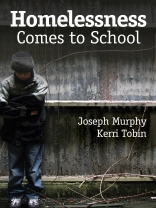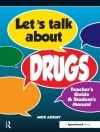‘This is the most comprehensive analysis of homeless youth that exists. Joseph Murphy and Kerri Tobin patiently outline the demographic, sociohistorical, and psychological challenges facing one of our most vulnerable and least understood populations.’
—William G. Tierney, Director, Center for Higher Education Policy Analysis
Professor, University of Southern California
School-aged children in homeless families and independent homeless youth represent the fastest-growing population of homeless individuals in the United States. This volume brings the issue to light with substantial and far-reaching research that describes the plight of these children, the legal framework surrounding the issue, and educators′ roles in teaching homeless children. Homelessness Comes to School also outlines effective intervention programs and provides specific guidelines for teaching homeless students. Topics covered include:
- A history of homelessness, including its demographic patterns, causes, and impact on society
- The various programs schools have implemented to address homeless children′s needs
- How schools, parents, and external community agencies can work together to educate homeless students
Evaluating the scope of the problem and developing interventions for these students at risk must be a priority for service providers and policy makers. This resource will give all involved parties a well-grounded understanding of homelessness and guidelines for working together toward a solution.
Inhoudsopgave
About the Authors
Part I. Portraying Homelessness
1. Understanding the Concept of Homelessness
2. A Brief History of Homelessness
3. Demographics of Homelessness
Part II. The Effects of Homelessness
4. Impact of Homelessness on Children and Youth
Part III. The Role of Society in Addressing Homelessness
5. Addressing Homelessness
Part IV. The Role of Schooling in Helping Homeless Children and Youth
6. The Legal Framework and Ensuring Access
7. Ensuring Success
References
Index
Over de auteur
Joseph F. Murphy is the Frank W. Mayborn Chair and associate dean at Peabody College of Education at Vanderbilt University. He has also been a faculty member at the University of Illinois and The Ohio State University, where he was the William Ray Flesher Professor of Education.In the public schools, he has served as an administrator at the school, district, and state levels, including an appointment as the executive assistant to the chief deputy superintendent of public instruction in California. His most recent appointment was as the founding president of the Ohio Principals Leadership Academy. At the university level, he has served as department chair and associate dean.He is past vice president of the American Educational Research Association and was the founding chair of the Interstate School Leaders Licensure Consortium (ISLLC). He is co-editor of the AERA Handbook on Educational Administration (1999) and editor of the National Society for the Study of Education (NSSE) yearbook, The Educational Leadership Challenge (2002).His work is in the area of school improvement, with special emphasis on leadership and policy. He has authored or co-authored 18 books in this area and edited another 12. His most recent authored volumes include Understanding and Assessing the Charter School Movement (2002), Leadership for Literacy: Research-Based Practice, Pre K-3 (2003), Connecting Teacher Leadership and School Improvement (2005), Preparing School Leaders: Defining a Research and Action Agenda (2006), and Turning Around Failing Schools: Lessons From the Organizational Sciences.












